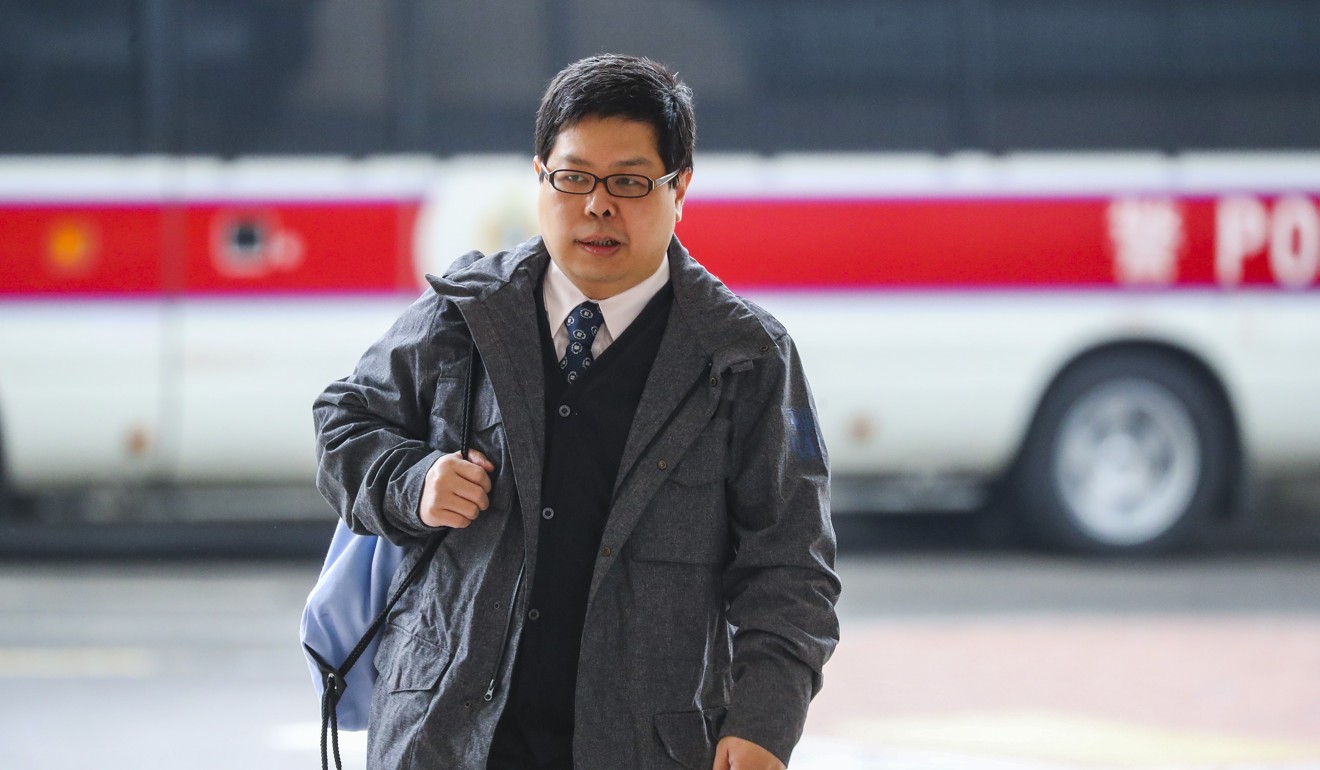
Democracy activist Howard Lam probably fired staples into his own legs and faked kidnapping by Chinese agents, forensics expert tells Hong Kong court
- Pathologist Lai Sai-chak says defendant’s version of events ‘defied common sense’, as magistrate rules Lam has case to answer
- Defence expert disagrees and says injuries were consistent with being tortured
Democracy activist Howard Lam Tsz-kin has a case to answer over allegations he faked his own abduction, a Hong Kong court has ruled.
Acting chief magistrate So Wai-tak made the decision after hearing evidence that the puncture wounds and cane marks found on his body were likely to have been self-inflicted.
The magistrate ruled that Lam, 42, has to answer to one count of knowingly making to police a false report of commission of any offence, after prosecutors concluded their case with the evidence of a forensic pathologist.

Dr Lai Sai-chak said he believed the two sets of injuries found on Lam’s thighs and belly were potentially self-inflicted, and said the activist’s story “defied common sense”, and was probably made-up.
“I initially expected him to be injured very seriously … but, surprisingly, apart from those two sets of wounds, there weren’t others,” Lai said. “Lam telling lies became a more reasonable explanation.”
But, defence expert Dr John Jason Payne-James said Lam’s injuries were consistent with his story, and said his linear bruises could be the product of torture.
The former president of the British Royal College of Physicians’ Faculty of Forensic & Legal Medicine also said self-inflicted wounds could be mimicked, and said it would be difficult to identify such wounds from the ones inflicted by others, based on medical evidence.
Lam has elected not to testify in his own defence.
The West Kowloon Court previously heard that Lam told police he had been abducted from Portland Street in Mong Kok on August 10, 2017, by mandarin-speaking men.
From there, he said he was drugged, tied up, assaulted with a hard object, tortured with staples puncturing his thighs, before being dumped on a Sai Kung stone beach.
When Lai examined him on August 11, he found the activist had about 20 shallow cane marks on his belly, and another 20 “rather scary” staples punctured into his thighs.
Lam also had psychiatric medication such as tranquillisers and sleeping pills in his system, but not volatile compounds, such as chloroform.
The prosecution’s witness said wounds inflicted by others tended to be messy and more serious. By contrast, self-inflicted wounds were more organised, less serious, and tended to fall on less sensitive areas where it would not hurt as much.

In this instance, Lai said the “abdomen was a rather odd choice for flogging”, and noticed that most of the cane marks fell in the same direction, parallel to each other while the “curious” puncture wounds were “rather symmetrical”, with five pairs on each side of Lam’s thighs.
Lai said a normal person would treat such wounds immediately to prevent infection, but one who engaged in self-harm would feel comforted and relaxed in seeking medical help.
“This could explain why Lam could sleep peacefully with his thighs punctured, and attend the press conference before going to the doctor,” he said.
Lai also pointed to a lack of defensive wounds, or any injuries consistent with a person having their mouth covered, being tied up, transported and dumped on a stone beach.
“I can’t rule out that it might have happened, but I can say there was no evidence to prove it happened,” Lai said.
On the other hand, Payne-James said the physical contact Lam mentioned did not always result in injuries, and suggested some wounds might have already disappeared by the time Lai examined the activist.
The defence expert’s evidence continues on Thursday.

